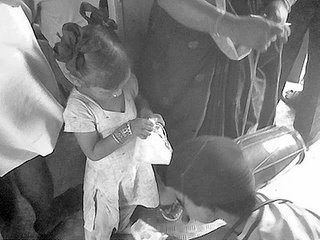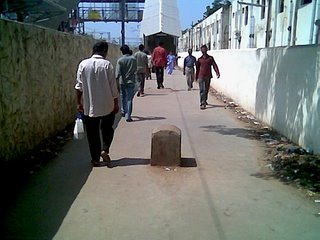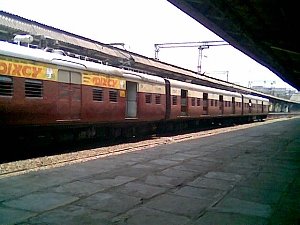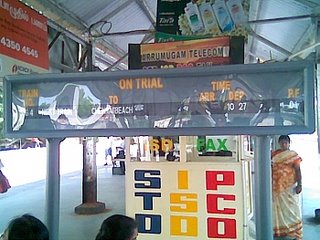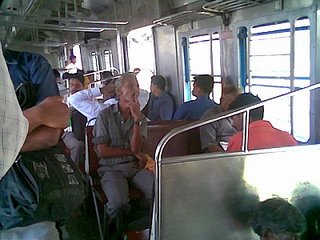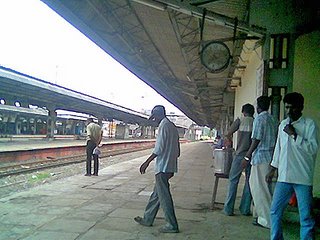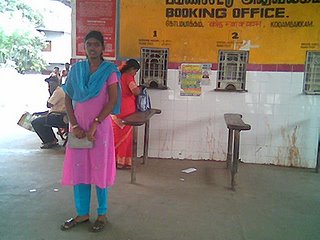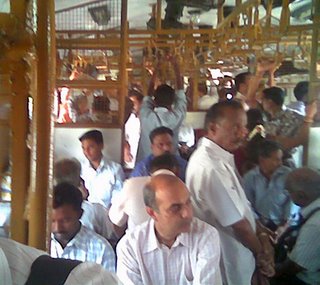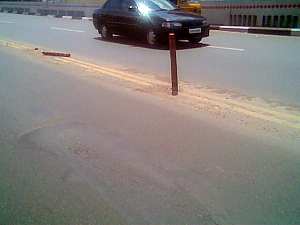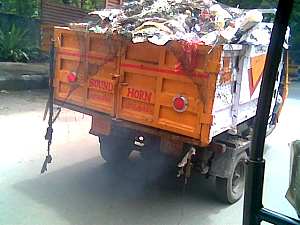Chennai roads, senseless drivers and South Korean indifferenceI had started this blog after a bad accident in which the personal driver (Indian) of a Korean executive of the Hyundai company rammed an Elantra car into my small, meek, fuel-sipping Maruti 800 car on August 13, 2006.
That post seems to have disappeared, so I am trying to recreate it here.
As a buckled-up, bespectacled and somewhat timid (on the road) driver who is always at odds with the drive-as-you-please Chennai traffic, my experience on the road took a great turn for the worse on that day.
A small town fellow, who gave his name as just Ravi proved my worst fears about Chennai traffic true. This ill-trained person at the wheel of a shiny wine red Elantra jumped the red signal at the junction of Music Academy on Radhakrishnan Salai and rammed his car into the side of my six-year old Maruti.
I was following the green light and going with two occupants in the car towards Marina.
Unlike the God after whom my pint sized car is named, the Maruti is a weakling when it comes to meeting metallic monsters in road combat.
Therefore, this is the result:

If you looked around the car, you would find that it does not have any dents elsewhere, in the six years that it has been on the road.
All that it took to spoil that reputation is one "classic" Indian driver called Ravi. This man said he has a licence issued in Arni, a small textile town in northern Tamil Nadu not particularly famous for the civic sense of its drivers. Surely, not now.
The occupant of the Elantra at the time of the accident, a Korean woman was completely engrossed in her own affairs, and she was content, as we found, talking to someone on the phone seated in the luxurious car. It mattered little to her that her personal driver had nearly killed three people after jumping a red light.
Perhaps people don't bother about traffic lights in South Korea - or at least, those who are executives in Hyundai motors don't. What is worse, Koreans don't seem to have basic courtesy, if this lady is a model South Korean.
If you are upset reading this particular part of the post, then you should sit inside one of the cars that Hyundai uses (presumably they do) for crash tests. It might give you some idea of what it feels like to be banged against some object.
Anyway, back to Ravi, who kept repeating after the accident that he was driving a car that belonged to a "Hyundai owner," which was shorthand for the few traffic policemen who had gathered, that his employer was an influential person. So watch out, he was essentially telling them.
Since my own car belongs to a major newspaper in this city, the police were in something of a quandary. They were relieved, in the event, to hear that they would only have to issue a
certificate for insurance purposes, and not register a First Information Report and pursue the case and prosecute Ravi.
All this should give you an idea of what Chennai roads are like, when it comes to -- sorry for the pun -- crunch. Incidentally, the road where the crash took place leads to the houses of both the present and former (and possibly the future) Chief Ministers of Tamil Nadu.
I called up a colleague and he sought the good offices of a senior police officer to get the insurance certificate issued quickly. After all, since Ravi was going to go scot free despite attempting to murder three people using a Hyundai Elantra, why waste time with the formalities?
So a somewhat bored head constable was asked to accompany me as I drove the battered Maruti several kilometres, to the J 2 Adyar Traffic Investigation unit at Besant Nagar. The certificate took only a short while to obtain. One must remember that the accident had taken place in full view of three or four traffic policemen, and at least 20 law and order reservists who were sitting inside a police truck, at the Music Academy junction. Why had not a single policeman stopped Ravi is of course less of
a mystery, because that is the way Chennai (and much of India) works.
In all of this, I must say that the seat belts of the Maruti really did their job. Neither me nor my kid in the front left seat (the side that took the hit) were shaken seriously, but a passenger in the back was thrown to the opposite side and left with some minor sprains and bruises in one arm. So never drive without the seat belt fastened.
If you wanted to look at the stupidly driven Hyundai Elantra car this is it:

The boot is ajar because the broken bumper of the car has been placed inside by the deviant driver.
Let me say at this point that I don't care much for cars, and think they are all contraptions that are only useful to get from point A to B. In fact, I believe it is criminal to sell such monsters in large numbers in a poor country like India (yes, despite the tall talk of India shining and superpower status etc), to drink up precious fuel for the pleasure of a few (like the lone Korean woman inside this one), while the bulk of the people in Chennai are sweating it out in ramshackle buses and overcrowded trains. Perhaps if we had air-conditioned buses and trains operating at affordable fares (without long waiting times), and they were funded by taxing such profligate consumers, I would not feel so bad.
All of which brings me to my pet raves and rants.
I am a proud advocate of public transport, car pools, ride shares, congestion charging and costlier fuel. I just love those good trains, buses, trams and the wide sidewalks (or footpaths if you wish).
You will find these themes recurring in this blog. So don't go away!
